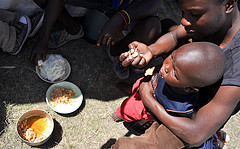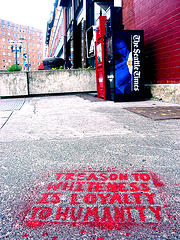
A survey about how Americans spend their time reports that men and women are finally working similar numbers of hours per week, at the office and in the home. That means the end of women bearing the bulk of the domestic load, right? Wrong.
The Wall Street Journal Online explores the different ways mothers and fathers spend their time in an article adapted from Jennifer Senior’s new book “All Joy and No Fun: The Paradox of Modern Parenthood.” Though men are pitching in more around the house, it seems that women are still doing the more arduous domestic tasks, a phenomenon that sociologist Arlie Hochschild termed “the second shift.”
Senior points out one of the fundamental problems: “Not all work is created equal. An hour spent on one kind of task is not necessarily the equivalent of an hour spent on another.”
For instance, taking care of children is often more stressful and strenuous than other solitary and monotonous domestic tasks, like washing dishes. One woman in Senior’s book describes doing the dishes as an opportunity to sit in the kitchen and let her mind wander. When put that way, it sounds a lot less stressful than wrangling toddlers.
Women also tend to be responsible for time-sensitive tasks. Getting kids ready for school or carting them off to extracurricular activities on time can greatly add to a woman’s stress. This leads women to do more multi-tasking than men. Having to manage time so strictly can cause mothers to worry and feel a constant sense of urgency.
Although it seems we have come a long way with men and women dividing chores on the domestic front, when we break it down to the stress and demand involved with individual tasks, women are still bearing the brunt of household management and childrearing.
![]()









